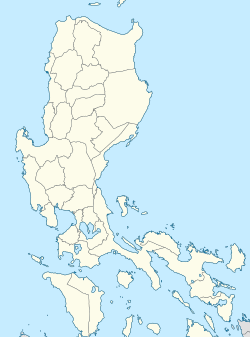| Balayan Church | |
|---|---|
| Immaculate Conception Parish Church | |
 Church facade in 2023 | |
Location in Luzon | |
| 13°56′17″N120°43′43″E / 13.937986°N 120.728549°E | |
| Location | Plaza Mabini Street, Balayan, Batangas 4213 |
| Country | Philippines |
| Denomination | Catholic |
| History | |
| Status | Parish church |
| Founded | 1759 |
| Dedication | Immaculate Conception |
| Consecrated | 1759 |
| Architecture | |
| Functional status | Active |
| Heritage designation | National Cultural Treasure |
| Designated | 2001 |
| Architectural type | Church building |
| Style | Baroque |
| Groundbreaking | 1748 |
| Completed | 1752 |
| Specifications | |
| Materials | Coral, wood, and bricks |
| Administration | |
| Archdiocese | Lipa |
Immaculate Conception Parish Church, commonly known as Balayan Church, is a Roman Catholic parish church in the town of Balayan, Batangas in the Philippines, under the jurisdiction of the Archdiocese of Lipa. The church is listed as a National Cultural Treasure as its construction was supervised by Filipino seculars during the Spanish colonial period. [1]






